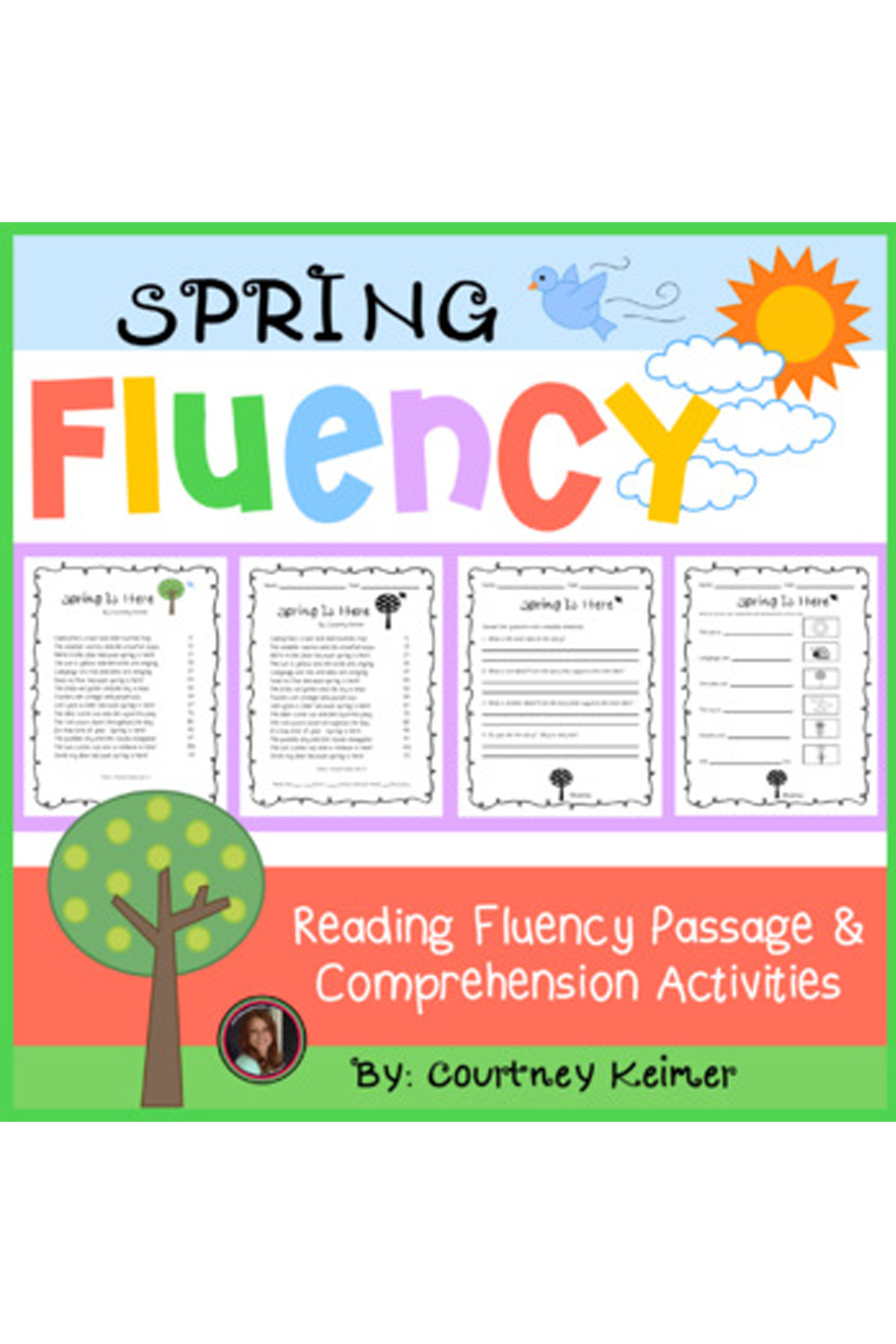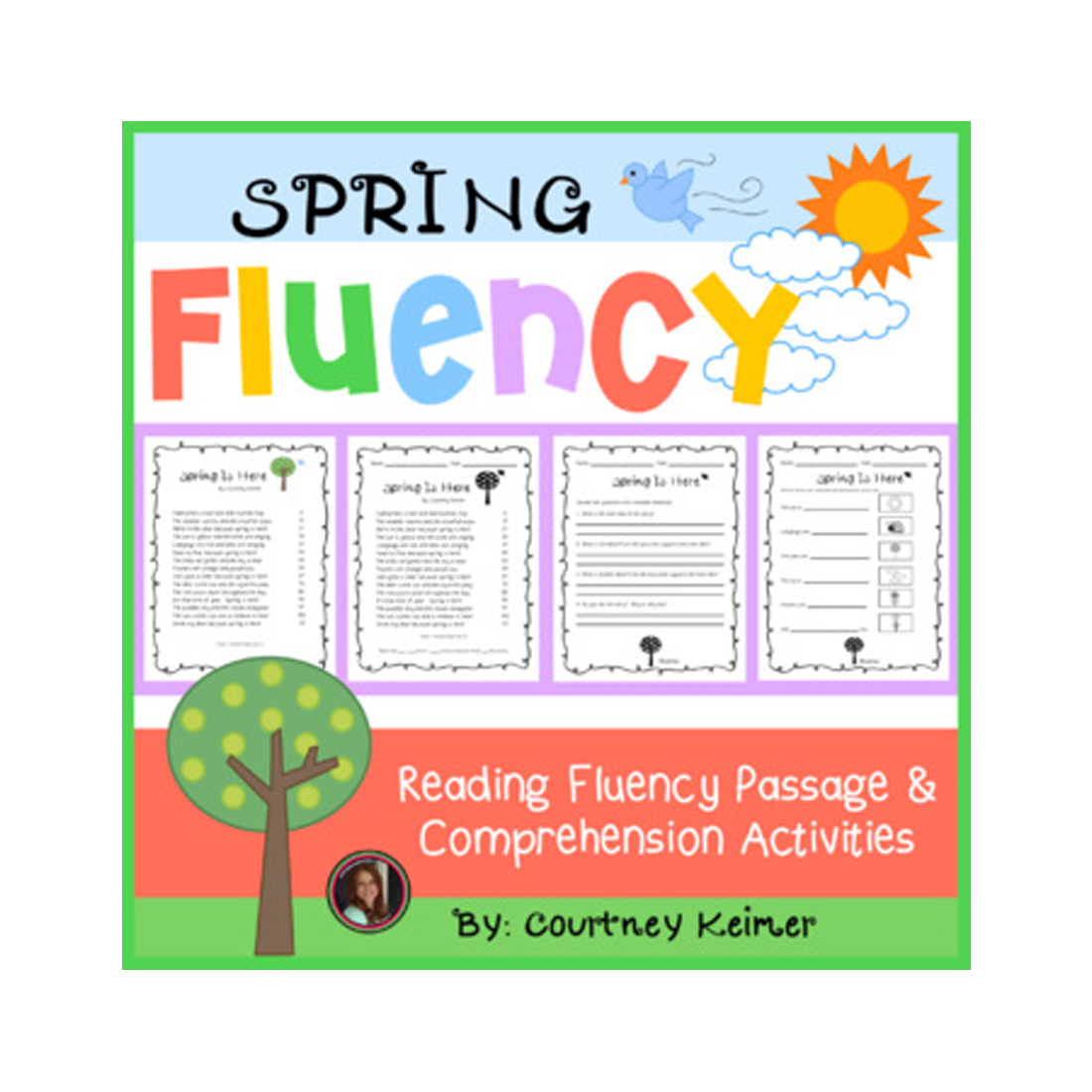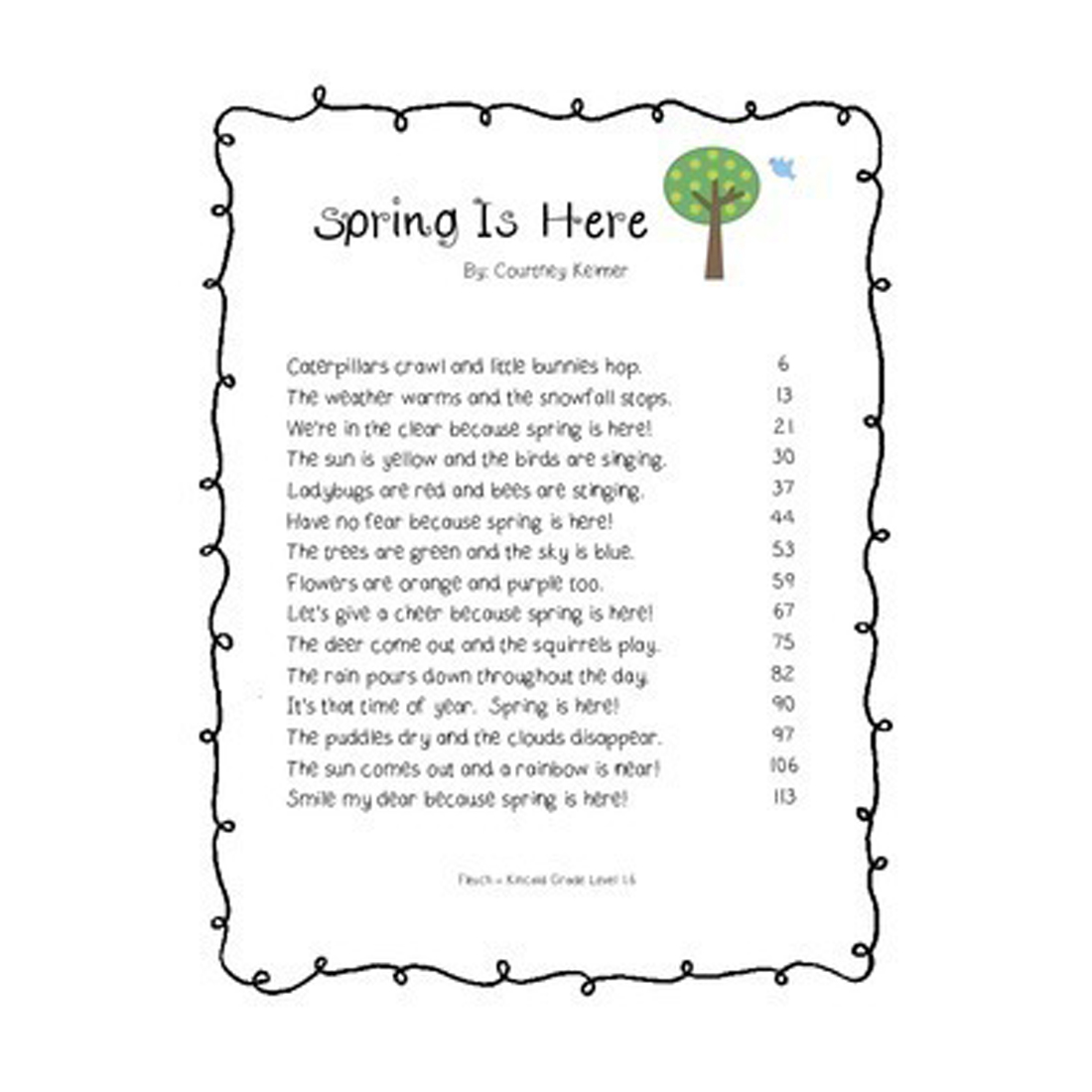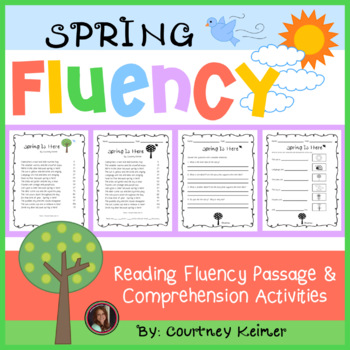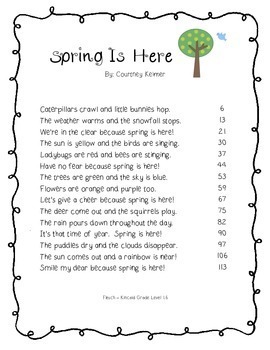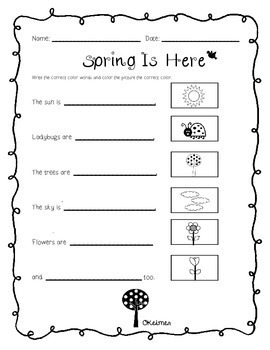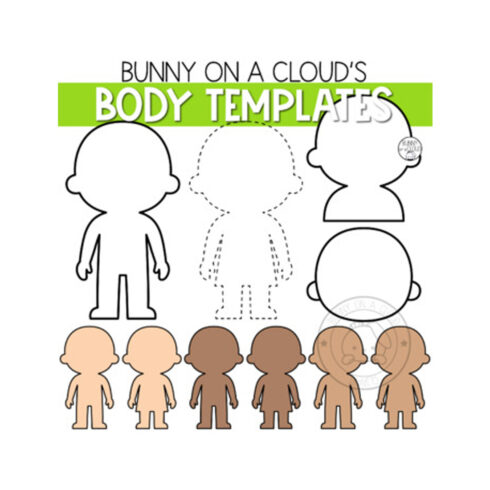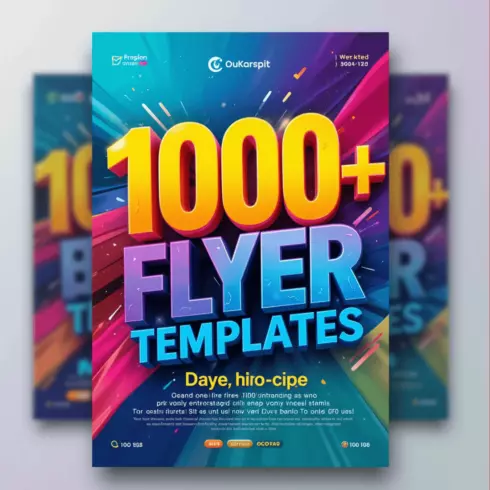
Product Specs
| Created by | mateofiklan |
|---|---|
| File type | ZIP |
| File size | 527.39 KB |
| Date of Creation | February 1 2023 |
| Color | blue green orange purple red |
| Rating | 5 (8) |
| Category |
This intervention packet contains a fluency passage called Spring Is Here and comprehension questions that go with it. I wrote the passage which is actually a poem. The text is on a 1.6 grade level using the Flesch – Kincaid readability calculator. I used a lot of sight words and several color words in the passage. It also teaches characteristics of the season Spring! In this file there is 1) a student copy of the fluency passage, 2) a teacher copy of the fluency passage where you can record the students’ scores, 3) comprehension questions (literal) where students write the correct color words as they were used in the passage, and 4) comprehension questions (inferential) where students identify the main idea and details of the passage. The first page student copy is in color so that you can print it and laminate it or put it in a page protector (or both!) and reuse it for students. The teacher copy of the fluency passage is black and white so you can print one for each student to record their scores. The comprehension questions are black and white as well. I used these materials for a small group intervention for second grade students. It looked like this:
Day 1: Have students do a cold read of the passage Spring Is Here and record scores. I then had students record their fluency score on a bar graph using a blue colored pencil to indicate a cold read, meaning this is the first time they have seen the text. Then we discussed the passage, the season of spring, and its characteristics. Next, students completed the first page of questions regarding colors. Students wrote the color words to complete the sentences. They liked coloring the little pictures too. This gave good practice of spelling the color words correctly (which are sight words as well) and provided a visual to go with the words, which really helps my students.
Day 2: Have students reread the passage and do a fluency check (warm read). Record their scores and have students graph their scores on their fluency graph using a yellow colored pencil to indicate a warm read. A warm read means students are familar with the text and have read it before and spent some time discussing it. Next, have students complete the second page of comprehension questions. These questions require more higher level thinking skills and are more inferential. I always read the questions aloud for students and encourage them to look back in the story for the answers.
Day 3: Have students read the passage and record their scores. Have students record their scores on their graph using a red colored pencil to indicate a hot read, meaning they are very familiar with the text. The graph should show improvement from the cold read to the hot read because of the repeated reading, discussion and activities. My students really enjoy seeing their progress and graphing their scores. Finally, this is a good time to do a “creating” or “evaluating” activity using what they’ve learned from the passage. Students could work together to write a color poem or take a spring walk!
